Abstract
Exact population genetic models of one-locus sib-to-sib kin selection with an arbitrary number of alleles are studied. First, a natural additive scaling is established for the genotypic value associated with probabilities of performance of altruism. Two classes of polymorphic equilibria are possible, one corresponding to the usual one-locus viability equilibria and the other reflecting the kin-selection assumptions of the model. At both, the covariance between additive genotypic value and genotypic fitness vanish. Further, the sign of this covariance determines the fate of rare alleles introduced near the first class of equilibria. In addition, the covariance explains the differences between Hamilton's rule, which results from Hardy-Weinberg assumptions, and exact initial increase conditions.
Keywords: additive genetic variance, regression among relatives
Full text
PDF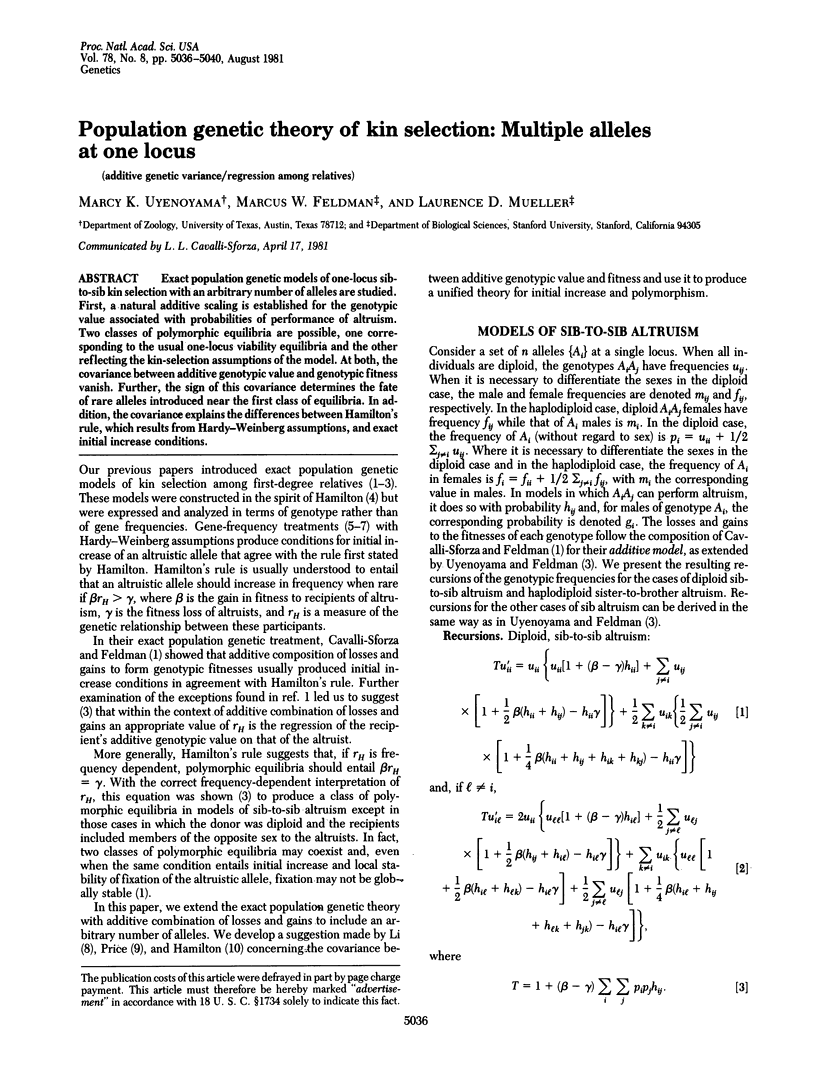
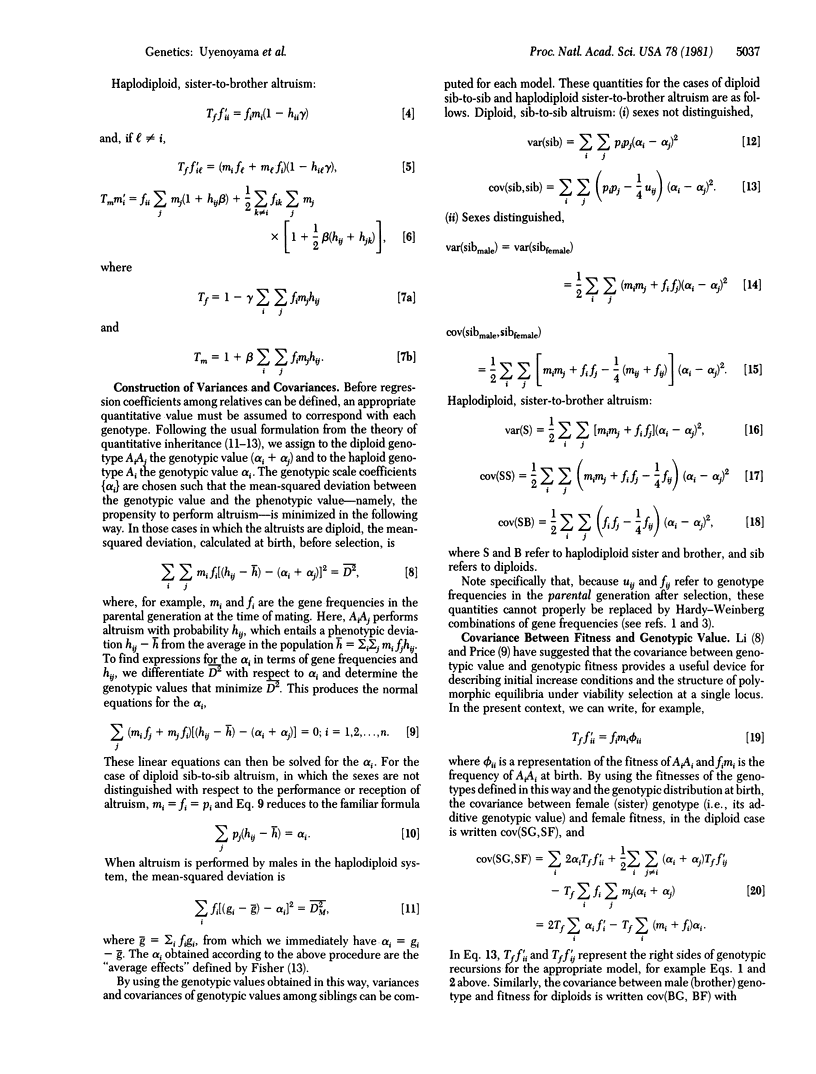
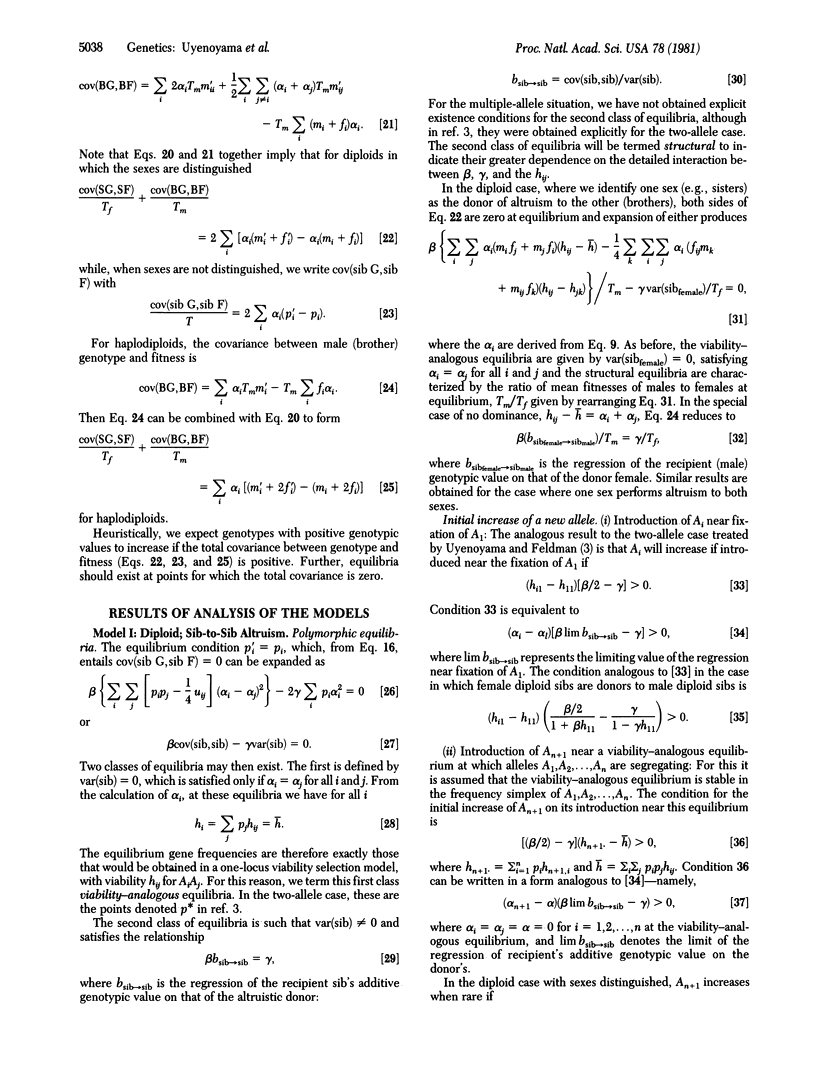
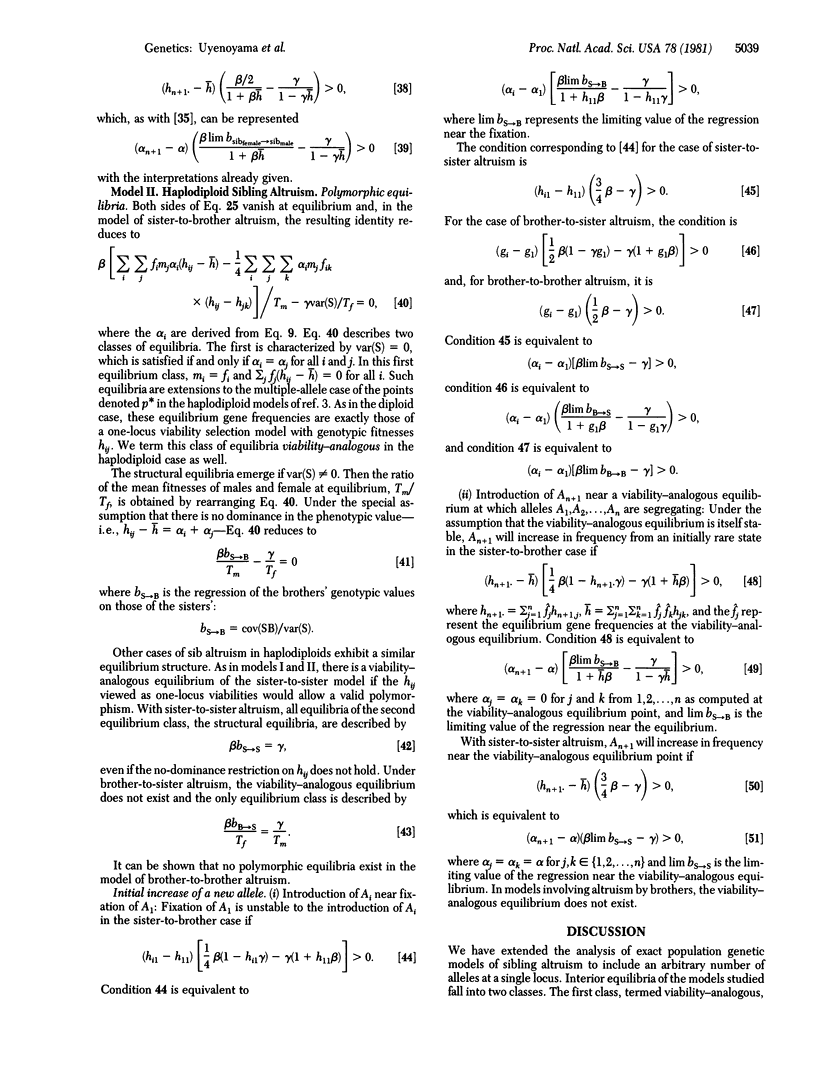
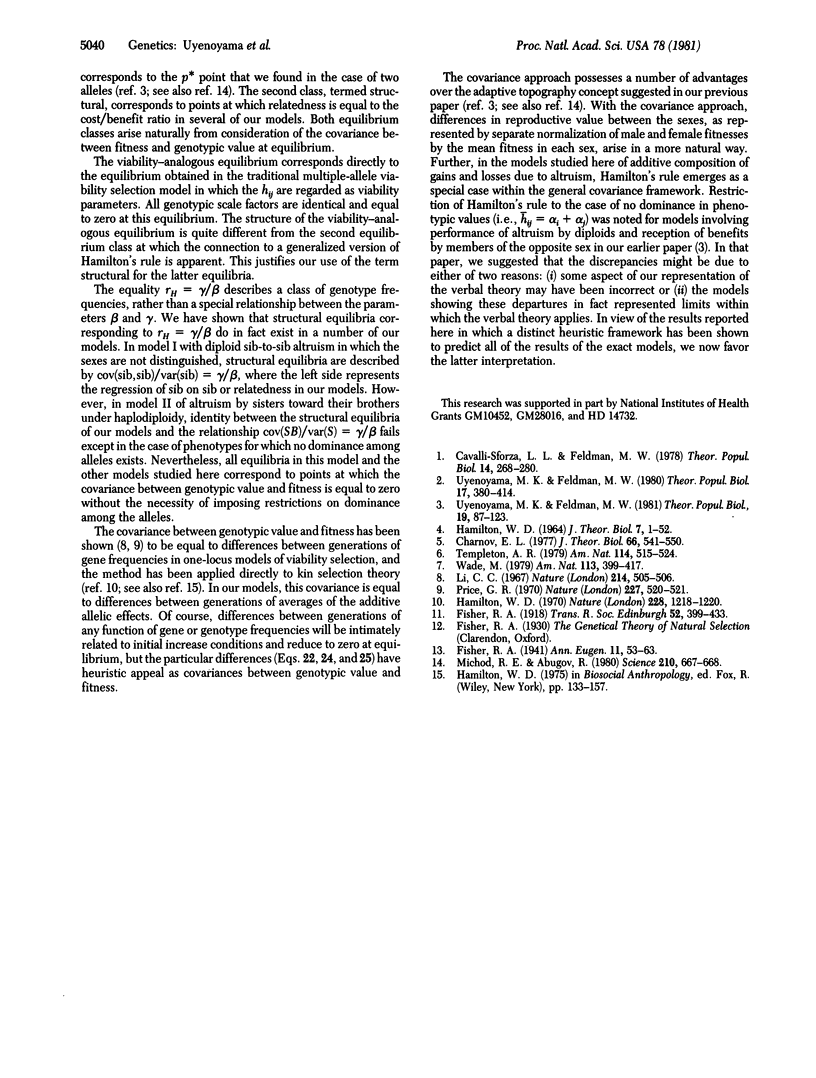
Selected References
These references are in PubMed. This may not be the complete list of references from this article.
- Cavalli-Sforza L. L., Feldman M. W. Darwinian selection and "altruism". Theor Popul Biol. 1978 Oct;14(2):268–280. doi: 10.1016/0040-5809(78)90028-x. [DOI] [PubMed] [Google Scholar]
- Charnov E. L. An elementary treatment of the genetical theory of kin-selection. J Theor Biol. 1977 Jun 7;66(3):541–550. doi: 10.1016/0022-5193(77)90301-0. [DOI] [PubMed] [Google Scholar]
- Hamilton W. D. Selfish and spiteful behaviour in an evolutionary model. Nature. 1970 Dec 19;228(5277):1218–1220. doi: 10.1038/2281218a0. [DOI] [PubMed] [Google Scholar]
- Hamilton W. D. The genetical evolution of social behaviour. II. J Theor Biol. 1964 Jul;7(1):17–52. doi: 10.1016/0022-5193(64)90039-6. [DOI] [PubMed] [Google Scholar]
- Li C. C. Fundamental theorem of natural selection. Nature. 1967 Apr 29;214(5087):505–506. doi: 10.1038/214505a0. [DOI] [PubMed] [Google Scholar]
- Michod R. E., Abugov R. Adaptive topography in family-structured models of kin selection. Science. 1980 Nov 7;210(4470):667–669. doi: 10.1126/science.210.4470.667. [DOI] [PubMed] [Google Scholar]
- Price G. R. Selection and covariance. Nature. 1970 Aug 1;227(5257):520–521. doi: 10.1038/227520a0. [DOI] [PubMed] [Google Scholar]
- Uyenoyama M., Feldman M. W. Theories of kin and group selection: a population genetics perspective. Theor Popul Biol. 1980 Jun;17(3):380–414. doi: 10.1016/0040-5809(80)90033-7. [DOI] [PubMed] [Google Scholar]


